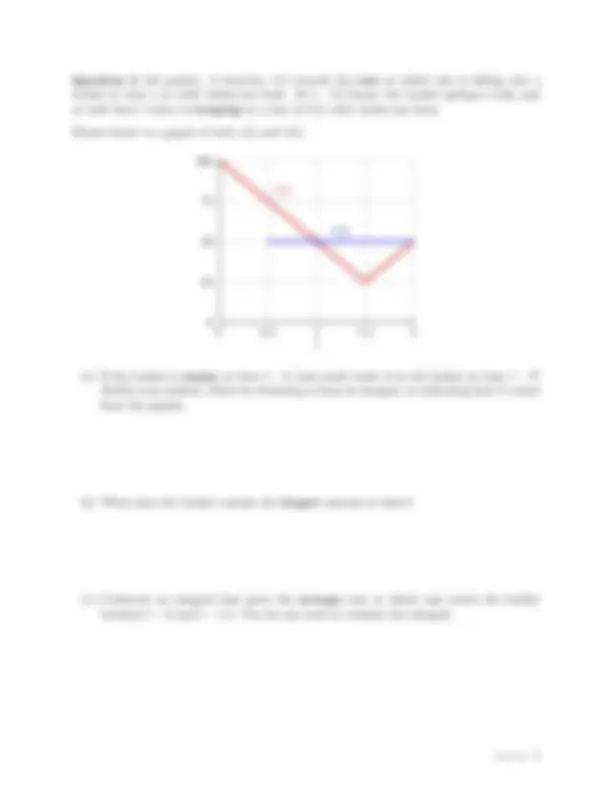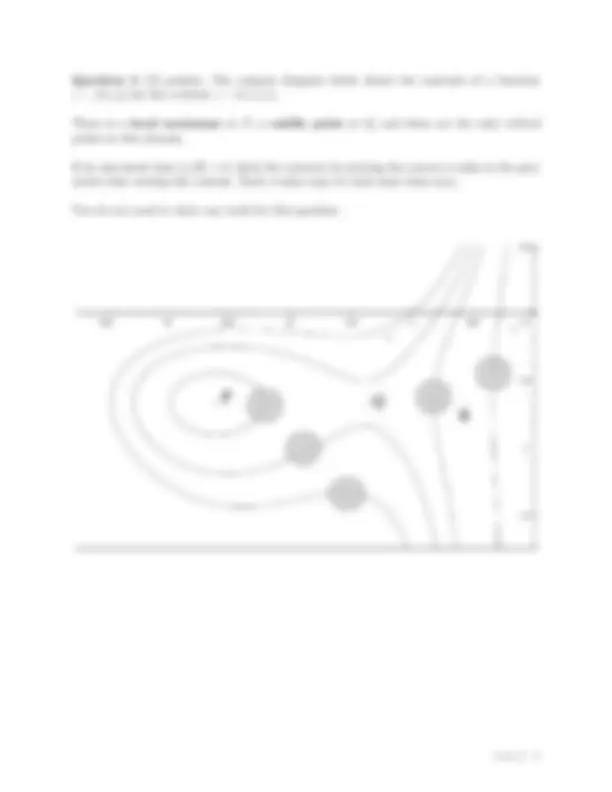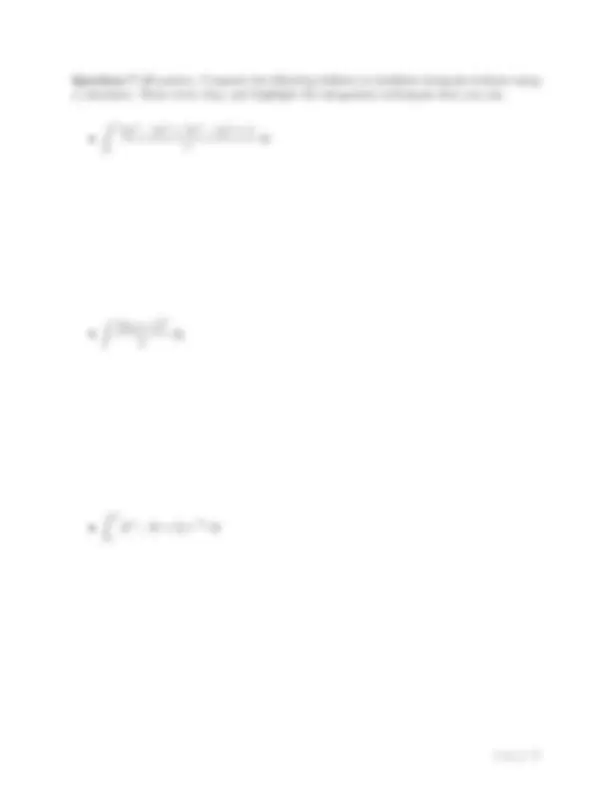











Study with the several resources on Docsity

Earn points by helping other students or get them with a premium plan


Prepare for your exams
Study with the several resources on Docsity

Earn points to download
Earn points by helping other students or get them with a premium plan
Community
Ask the community for help and clear up your study doubts
Discover the best universities in your country according to Docsity users
Free resources
Download our free guides on studying techniques, anxiety management strategies, and thesis advice from Docsity tutors
This exam has 10 problems, and will last 120 minutes. • You may use any scientific non-graphing calculator.
Typology: Exams
1 / 16

This page cannot be seen from the preview
Don't miss anything!










First Name: (as in student record)
Last Name: (as in student record)
USC ID: Signature:
Please circle your instructor and lecture time:
Tokorcheck Pawlowski Heilman Gao Rooney Tabing 9am 9am 10am 10am 1pm 1pm 11am 12pm 12pm 2pm
Do not write in the box below:
Q01 Q02 Q03 Q04 Q05 Partial 1
Q06 Q07 Q08 Q09 Q10 Partial 2
Question 1 (15 points). The table below summarizes some data about a function f (x). It is also given information that:
At each x-value from 1 to 10, determine whether or not f (x) has a local maximum, local minimum, or inflection point there, and circle the appropriate response in each column. If it is not possible to make that determination using the data at hand, circle “Inconclusive”.
You do not need to show any work for this question.
x f ′(x) f ′′(x) (^) local maximum local minimum inflection point
1 0 − (^3) Yes / No / Inconclusive Yes / No / Inconclusive Yes / No / Inconclusive
(^2 0 0) Yes / No / Inconclusive Yes / No / Inconclusive Yes / No / Inconclusive
(^3 0 1) Yes / No / Inconclusive Yes / No / Inconclusive Yes / No / Inconclusive
(^4 1 0) Yes / No / Inconclusive Yes / No / Inconclusive Yes / No / Inconclusive
5 − (^1 2) Yes / No / Inconclusive Yes / No / Inconclusive Yes / No / Inconclusive
(^6 0 2) Yes / No / Inconclusive Yes / No / Inconclusive Yes / No / Inconclusive
(^7 4 0) Yes / No / Inconclusive Yes / No / Inconclusive Yes / No / Inconclusive
8 1 − (^3) Yes / No / Inconclusive Yes / No / Inconclusive Yes / No / Inconclusive
(^9 0 0) Yes / No / Inconclusive Yes / No / Inconclusive Yes / No / Inconclusive
(^10 3 0) Yes / No / Inconclusive Yes / No / Inconclusive Yes / No / Inconclusive
Question 3 (15 points). The contour diagram below shows the contours of a function z = f (x, y) for the z-values z = 0, 1 , 2 , 5.
There is a local maximum at P , a saddle point at Q, and these are the only critical points in this domain.
If we also know that fx(R) > 0, label the contours by putting the correct z-value in the grey circles that overlap the contour. Each z-value may be used more than once.
You do not need to show any work for this question.
Question 4 (18 points). A carpenter sells desks for $30 each and, at this price, sells 100 desks per month. The carpenter estimates that for each $5 increase in price, she sells 10 fewer desks per month. If the desks are manufactured at a cost of $2 per desk, at what price should they be sold to generate the greatest possible profit?
Carefully show why your answer yields the greatest possible profit and show all of your work.
(c) Use your estimates from Parts (a) and (b) to estimate your friend’s BAC if she had another 8oz of beer (1.75 drinks total), and weighed 147 pounds. Can she legally drive?
(d) If a male friend had 2.3 drinks and weighed 173 pounds, could they legally drive?
Question 6 (18 points). Compute the derivatives indicated in each part without using a calculator. Show every step, and highlight the derivative rules that you use.
df dt
when f (t) = (2t^ + 5t)^9.
q p^2 + q^2
∂^2 f ∂x ∂y
when f (x, y) = x ln(xy).
Question 8 (18 points). Find all critical points of the following function. Classify each critical point using the second derivative test:
f (x, y) = 3x^2 y + y^3 − 3 x^2 − 3 y^2 + 2
Question 9 (18 points). Find the maximum/minimum values of the function f (x, y) = 3xy, when the variables x and y must also satisfy the constraint 2x^2 + y^2 = 1. For each point you find that is a candidate for a max/min, identify it as a max, min or neither.
(c) Compute
R
f (x, y) dA, using the ordering that you prefer.
(d) Construct a formula for the average value of f (x, y) over the region R. You do not need to evaluate this formula.